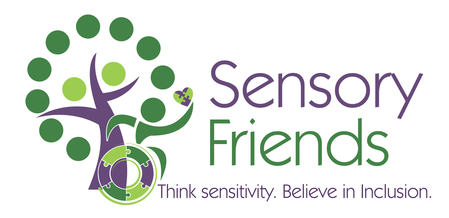

The IEP is a long document that contains sections with detailed components:
· Student Information: this contains all demographic information about your child (age, grade, exceptionality, language spoken, etc.).
· The IEP Team: Who needs to be there? Anyone who works with and has important information about your child. Anyone: Parents, Student, Special Education Teacher, Regular Education Teacher, Physical Education Teacher, Therapists, Tutors, someone who interprets evaluation results, and an LEA (Local Education Agency) Representative – this is the person authorized to make decisions on behalf of the school district.
· Special Considerations: This section is a checklist of your child’s specific needs for services, such as: an FBA (Functional Behavioral Assessment), BIP (Behavioral Intervention Plan), Assistive Technology needs, Assistance with Communication, Hearing or Visual Impairments, and other details are checked off in this section.
· Assessment Data: If your child is taking the statewide assessment test, then the test results are listed here. If your child is taking an alternative assessment, in addition to test results, there must be an explanation provided for why your child isn't participating
in the statewide assessment.

All children have the right to a Free and Appropriate Public Education (FAPE).
1. All children who become eligible for special education services must have an IEP.
2. Parents are to participate as equal members and decision- makers of the IEP team – it is required that they be invited to the IEP meeting.
3. Parents are advised of due process rights.
4. All school records are private and kept confidential.
5. All children have the right to learn alongside their peers.
6. All children have the right to access to the same services, programs and assessments as their peers.
7. The IEP should at least be reviewed annually (however, this is not limited to one meeting annually).

o Your child’s current abilities and strengths (assessment data and other sources are listed).
o Details on how the disability interferes with your child’s learning or progress.
o Your child’s specific educational needs.
Please note that your child may not use all the domains listed. For example, maybe your child only needs help with Curriculum and Learning and Social/Emotional domains. The IEP will be written with goals, accommodations, related services and supports for those two domains only.
· Measurable Annual Goals: Based on the data and educational needs expressed in the present levels of performance, a new goal is written for a skill to be mastered, whether it be academic or behavior related. Each goal should be realistically possible for your child to reach by the end of the school year. There are typically at least three goals written in each domain.
· Short-term Objectives and Benchmarks: These are not required for each goal, unless your child is taking an alternative assessment, or the IEP team decides it is needed. Short-term objectives and benchmarks are written to help maximize and support your child’s success rate in reaching his or her goal. Short-term objectives are short, intermediate steps that are achieved before the desired goal. Typically, there are at least two for each goal. A benchmark is a major milestone leading to the desired goal. Here is an example of a goal with short-term objectives:
Domain – Communication Goal 1: By May of 2016, Joe will participate in class, using picture prompt cards to request or express needs in two different settings.
Short-term Objective 1: By November of 2015, Joe will be able to express wants and needs, using pictures in a classroom, 8 out of 10 trials. Data will be collected based on observation.
Short-term Objective 2: By February of 2016, Joe will be able to express wants and needs, using pictures during extra-curricular activities, 8 out 10 trials. Data will be collected based on observation.

Statement of Special Education Services: This section lists and itemizes all related, specialized, and supplemental services offered to your child. This includes the name of the service, the location, duration, and frequency.
Example:
Service: Location: Initiation: Duration: Frequency:
Speech Therapy Classroom 9/30/2015 6/2/2016 90 min/weekly
· Related Services: The IEP team decides if your child needs related services. Examples of related services include: Speech, Language, Occupational, and Physical Therapy, Audiology and Interpreting Services, Psychological and Counseling Services, Transportation and Specialized Equipment.
· Medical Equipment: If your child has special healthcare needs, the IEP team decides if needs include wheelchair, crutches, tracheotomy equipment, or other special medical needs.
· Modifications: Modifications are changes made to your child’s curriculum, or the content of instructional materials. For example, a modification in reading might mean that although students in your child’s class are reviewing a book at reading level 3, your child might be reviewing the same book at reading level 1.
· Assistive Technology: The need for these services are determined by the IEP team and the results of an assessment. Assistive technology could be anything from low-tech items such as, visual timers, pencil grips, specialized planners, and weighted vests, to high-tech items such as, communication devices, text-to-speech devices, mouse or keyboard alternatives, etc.
· Supports for School Personnel: This section of the IEP is a statement for supports or training for your child’s teachers and other personnel. This could be training in the use of a new assistive technology device.
· Extended School Year Services (ESY): The IEP team determines if your child is eligible for extended school year services. This is a service that is provided to children that are most likely to regress, or have difficulty retaining learned skills over the long summer break. This decision is also determined by the severity of your child’s disability. ESY days and services are shortened significantly, usually half days are spent at school. The special education and related services are detailed with the initial times, duration, and frequency in this section.
· Other Important Details Include:
o Progress Reports - How often updates and reports are shared is decided by the IEP team. Typically, the team follows the same time frame as the distribution of school report cards. However, no one is bound to this schedule –especially if data repeatedly reveals that a new strategy isn’t working and needs to be changed. This is also the best time and opportunity for the team to decide on the methods for communicating and sharing information.
o Transition – If your child is fourteen years old, then it is a Transition IEP, which includes information on:
§ Age of Majority: at age eighteen years old, your child reaches the age for which he or she is an adult. All rights are transferred to your child, and he or she will make their own decisions at the IEP meeting.
§ Student Input: Your child must be invited to attend the IEP meeting, and provide information on his or her concerns, learning and career aspirations, as well as supports needed.
§ Diploma Options and Course of Study: Is your child on the curriculum track for a standard diploma or certificate of completion?
§ Self Determination: The IEP team decides on whether or not your child needs support, training, and assistance with:
· Making Choices and Decisions
· Self-Advocacy
· Employment and Career Options
· Independent Living Skills
· Financial Literacy, Future Planning and Goal Setting
§ Transition Service Needs: these are determined by the IEP team after reviewing shared information and assessments taken from the self- determination review process.
One of the things I’ve seen happen repeatedly in the Transition IEP’s I’ve reviewed, is when a child expresses their dreams, interests, or concerns in written form, this information is included and attached to the IEP as the student’s collected input. Yet, none of his or her information was addressed in the actual Transition IEP. For example, Johnny wrote in his input form that he hates to be bullied. He struggles with it every year and he has a hard time making friends. He also wrote that he needed help with long division math. Yet, under the domain for Social/Emotional, there was no goal for making friends or strategies for what Johnny should do to avoid bullying. Nor was there a goal in Curriculum and Learning that addressed his need for help with solving long division math problems. It’s important to note that a Transition IEP is not a separate document. Transition goals, services, and strategies are woven into your child’s existing IEP. I will write another blog entitled, “The ABC’s of the Transition IEP” soon!
© 2015 Sensory Friends

 RSS Feed
RSS Feed